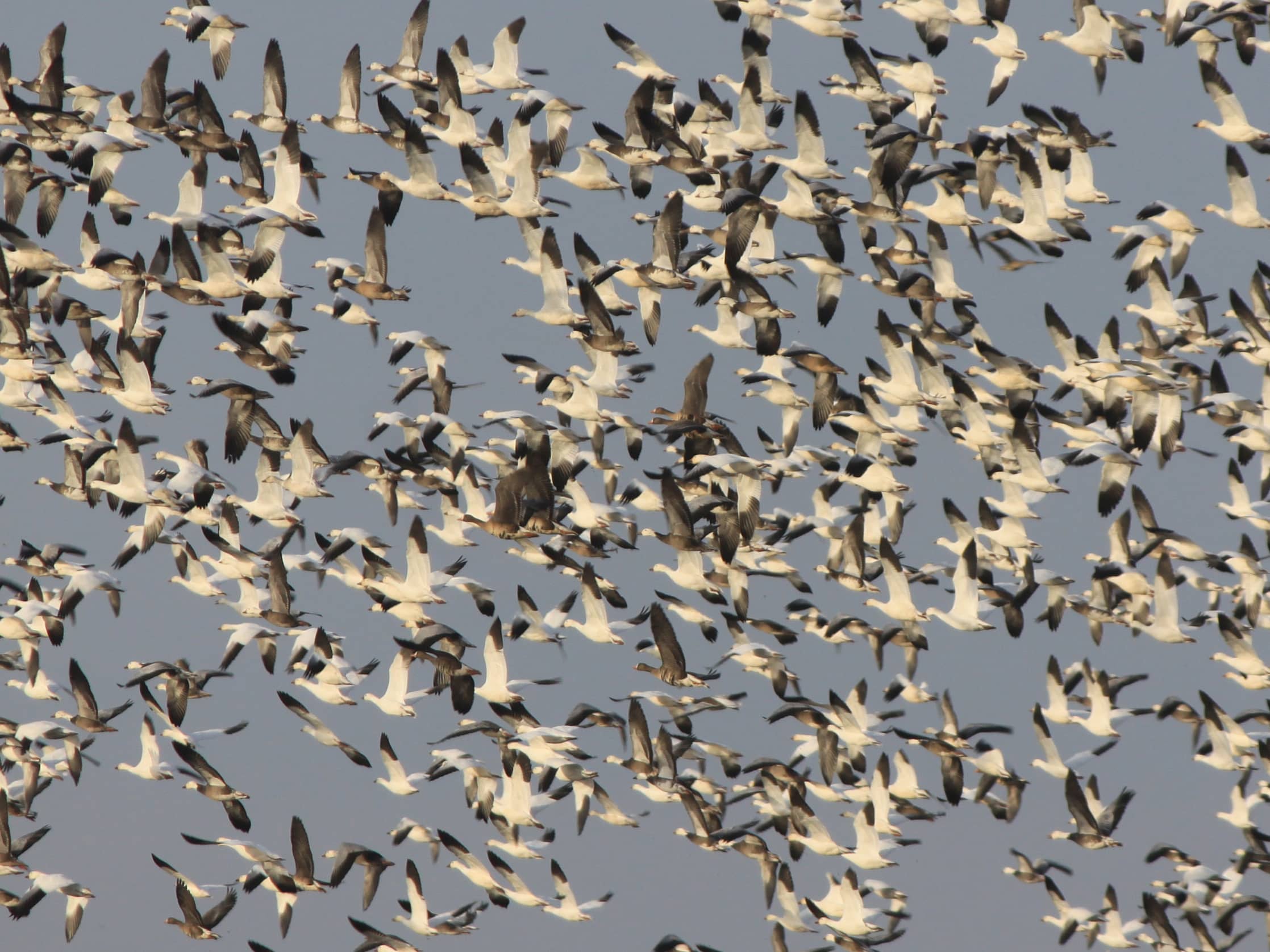
On the Move. Snow geese have begun their migration in southern latitudes, but impacts from the recent cold weather down south, and a lack of a snow line up north both may impact how fast the birds move. Simonson Photo.
By Nick Simsonson
Early spring-like conditions have many fans of the outdoors thinking about returning flocks of snow geese, Canada geese, mallards and other waterfowl flying into the area as a sure sign that the season has come ahead of schedule.
As the limited snow recedes and things begin to warm up, some concerns about what those birds will find upon their return to the region are beginning to mount. According to Dane Buysse, Ducks Unlimited Conservation Programs Biologist, the current low water levels may be an issue for nesting and the rearing of young waterfowl across the region and the condition of upland habitat surrounding sloughs and ponds may also pose problems.
Spring Slight?
“For returning waterfowl they’re going to see a little bit drier conditions as many people have probably noticed, most of the state is covered with no snow, unlike usual,” Buysse details, adding, “this year we’ve been pretty fortunate to not have a lot of snow, but that means we’re going to see drier conditions going into spring for waterfowl.”
With high temperatures the week of Mar. 1 reaching into the fifties and sixties in North Dakota, what snow line that existed – predominantly in the eastern reaches of the state – was quickly melting. As of Mar. 3, according to NOAA, more than two-thirds of the state was snow free, and the same percentage is already experiencing a severe drought according to the University of Nebraska-Lincoln United States Drought Monitor. The lack of meltwater, and a continued trend of limited precipitation could spell trouble not only for waterfowl finding wetland basins to stake out their nesting territories, but also for the upland grasses surrounding those potholes which provide cover from predators for nesting hens and their offspring.
“When you’re looking at grass, the previous fall is what you want to look at for your forage production for what you’re going to be getting for the upcoming year and we were quite dry this last year,” Buysse states, “for nesting this year, when you do see the drought impacts, those birds are going to have less overhead cover from predators that are looking to get into those ducklings and get into those nests,” he cautions, suggesting the region is on trend for shorter stands of grass in prairie pothole uplands.
Southern Impacts
In addition to the turmoil which included power outages and burst pipes for people, the recent unprecedented cold weather in southern states like Texas and Missouri may have had a negative impact on the health of migratory waterfowl which winter there, and likely may affect how and when the bulk of snow geese make their way back to the Dakotas.
With temperatures dipping into the single digits throughout Texas and Oklahoma for the first time in about a century, and doing so for an extended period, Buysse states that the unseasonable cold has impacted the health of snow geese and may delay their movements to their breeding grounds in Canada and their passage through the Dakotas. If that is coupled with a lack of a snow line to hold the birds in place, it may be a very quick spring snow goose hunting opportunity this year.
“With that snow and the real big cold snap that went all the way down to Texas, the birds did lose condition in the southern region, so they are a little bit skinnier,” Buysse reports on the birds’ physical conditions which may counter the lack of snow on the ground along the migratory route, “those birds may be shooting right through, it will depend on how their body condition is, if they are able to build up their reserves and continue their migration, they may move through quick; but it’s North Dakota, we may get a snow storm at the end of March and that could hold up some birds,” he concludes.
For more information on the migration of snow geese and other waterfowl, Buysse encourages people to check out the Ducks Unlimited Migration Tracker at ducks.org/migrationmap.
There people can get reports from observers and DU staff throughout the nation on what waterfowl movements are occurring as birds get into motion, gaining insight as to how conditions are affecting what’s happening in this early spring scenario.
